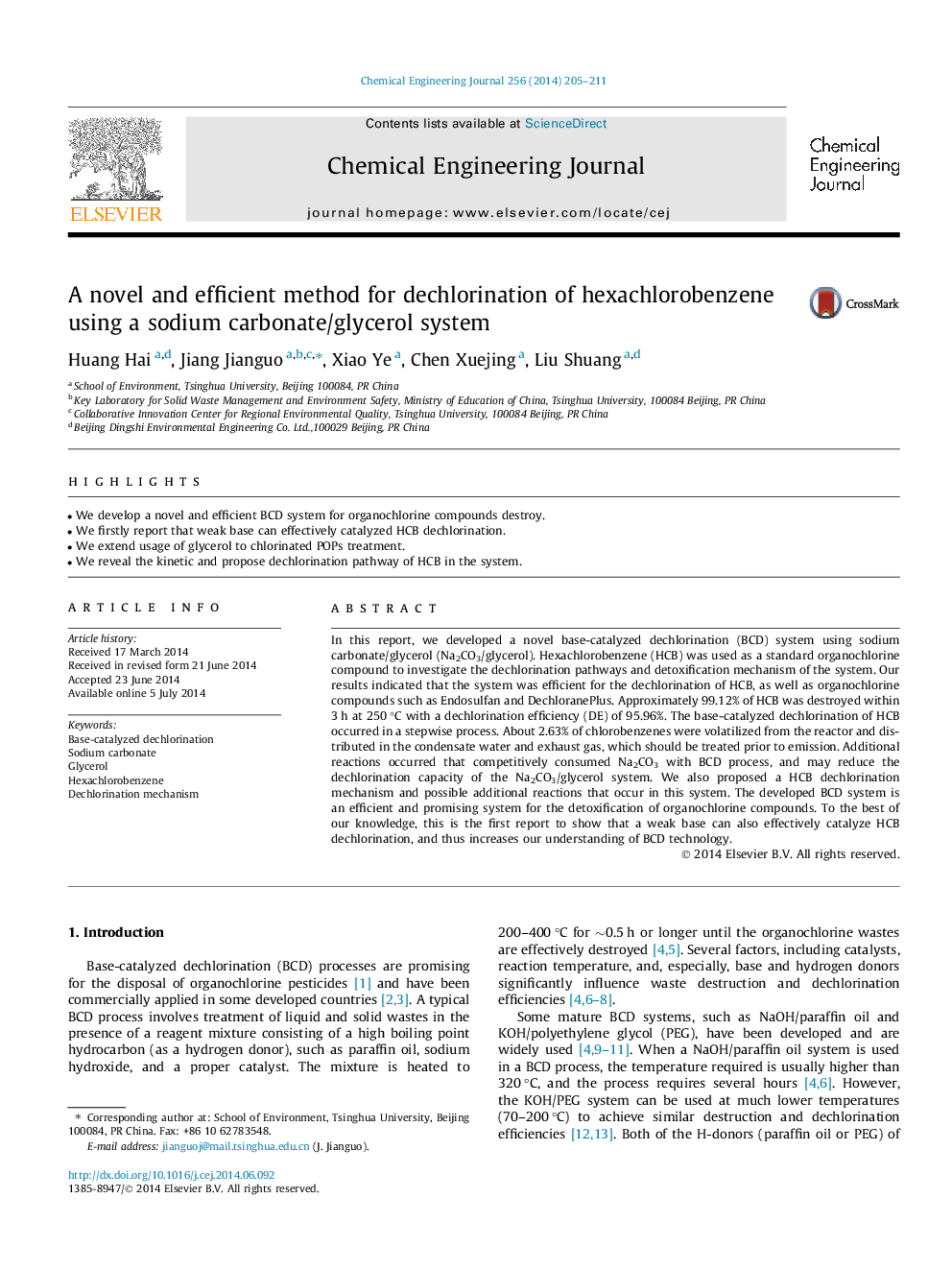| Article ID | Journal | Published Year | Pages | File Type |
|---|---|---|---|---|
| 147003 | Chemical Engineering Journal | 2014 | 7 Pages |
•We develop a novel and efficient BCD system for organochlorine compounds destroy.•We firstly report that weak base can effectively catalyzed HCB dechlorination.•We extend usage of glycerol to chlorinated POPs treatment.•We reveal the kinetic and propose dechlorination pathway of HCB in the system.
In this report, we developed a novel base-catalyzed dechlorination (BCD) system using sodium carbonate/glycerol (Na2CO3/glycerol). Hexachlorobenzene (HCB) was used as a standard organochlorine compound to investigate the dechlorination pathways and detoxification mechanism of the system. Our results indicated that the system was efficient for the dechlorination of HCB, as well as organochlorine compounds such as Endosulfan and DechloranePlus. Approximately 99.12% of HCB was destroyed within 3 h at 250 °C with a dechlorination efficiency (DE) of 95.96%. The base-catalyzed dechlorination of HCB occurred in a stepwise process. About 2.63% of chlorobenzenes were volatilized from the reactor and distributed in the condensate water and exhaust gas, which should be treated prior to emission. Additional reactions occurred that competitively consumed Na2CO3 with BCD process, and may reduce the dechlorination capacity of the Na2CO3/glycerol system. We also proposed a HCB dechlorination mechanism and possible additional reactions that occur in this system. The developed BCD system is an efficient and promising system for the detoxification of organochlorine compounds. To the best of our knowledge, this is the first report to show that a weak base can also effectively catalyze HCB dechlorination, and thus increases our understanding of BCD technology.
